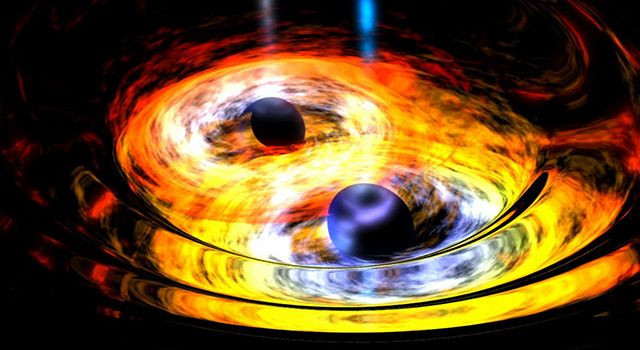Gravitational Waves: Everything You Need To Know Before Thursday's Big Announcement

In 1915, Albert Einstein published his theory of general relativity, revolutionizing, almost overnight, humanity’s understanding of space, time and the very nature of existence. Over the past century, countless experiments have shown that even the most outlandish predictions stemming from his magnum opus are correct.
On Thursday, Einstein may be vindicated once again. If rumors are to be believed, scientists may finally have detected “gravitational waves,” putting an end to years of fevered speculation regarding their existence. At 10:30 a.m. EST, researchers affiliated with the Laser Interferometer Gravitational-Wave Observatory (LIGO) will hold a press conference (live stream here) at the National Press Club in Washington, D.C., to provide a status report on the effort to detect these ripples in the fabric of space-time.
So what are gravitational waves and why would their detection represent a scientific landmark?
Imagine dropping a pebble in a pond. This creates ripples, which emerge from the point of impact and travel across the surface of the pond. Now replace the pebble with a slightly bigger object — a black hole or a massive star. Einstein’s general theory of relativity, which posits that gravity warps the fabric of cosmos, also tells us that violent events such as the collision of massive objects such as black holes and neutron stars create ripples in the curvature of space-time.
“They're waves, like light or any other kind of electromagnetic radiation, except here what's ‘waving’ is space and time itself,” NASA astrophysicist Ira Thorpe explained. “You get radiation, basically light, when you move some sort of charged particle. When you're moving masses, you get gravitational waves.”
A direct detection of gravitational waves would be a huge milestone, allowing researchers to test how general relativity operates under extreme conditions, such as the collision of black holes, and open up an entirely new way to look at the universe.
Currently, all we know about the cosmos is what we have gathered from electromagnetic radiation such as radio waves, visible light, infrared light, X-rays and gamma rays. As a result, a lot of information remains hidden because such waves get scattered as they traverse space-time, and because not all events produce significant amounts of electromagnetic radiation.
With enough gravitational wave detectors, scientists would be able to study objects and phenomena that would otherwise remain hidden from view, providing us with a “gravitational map” of the known universe.
The Big Bang, which created our universe 13.7 billion years ago, is also believed to have generated a powerful hum of gravitational waves. These “primordial” gravitational waves would be embedded in the cosmic microwave background, making their detection extremely difficult.
“Gravitational waves will also tell us about how many objects like black holes and neutron stars exist in the Universe. They will give us insight into what happens during some of the Universe's most violent explosions such as supernovae and gamma ray bursts. Someday, gravitational waves might even allow us to listen to what was happening in the earliest moments of the Universe, when it was so dense and hot that no light could move around. Any photons emitted during that time were long ago absorbed by a plasma of hot ions, but gravitational waves from that era could travel directly to us on Earth with little interference from the matter in the Universe,” the LIGO team explained, in an online forum.
For now, though, scientists at the LIGO collaboration, which has been operational since 2002, are looking for gravitational waves created by phenomena taking place in the present-day universe. The twin LIGO installations are located roughly 1,800 miles apart in Livingston, Louisiana, and Hanford, Washington. Having two detectors is a way to sift out terrestrial disturbances, such as traffic and earthquakes, from the faint ripples of space itself.
The researchers have been using lasers to detect the tiniest of fluctuations in distance caused by the passage of a gravitational wave. By bouncing the lasers along the two installations many times and then comparing the two beams, the LIGO instrumentation is able to detect any slight change in phase — an observation that could indicate a slight warping of space-time.
“Let's say this: The first discovery of gravitational waves is a Nobel Prize-winning venture,” Bruce Allen, a physicist at the Max Planck Institute for Gravitational Physics in Hannover, Germany, told Reuters.
© Copyright IBTimes 2024. All rights reserved.






















